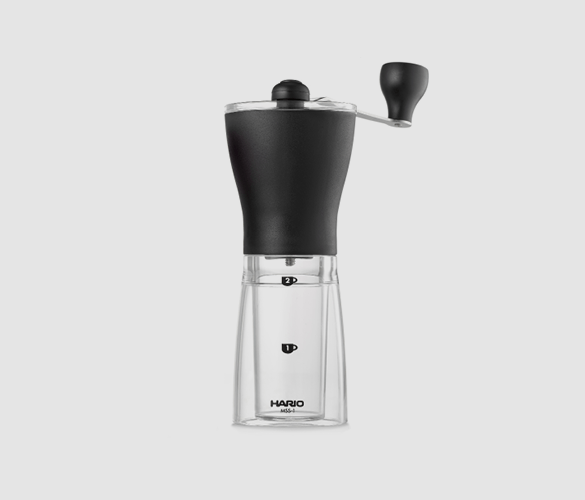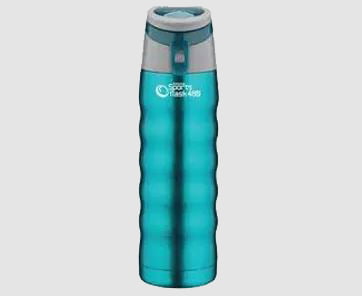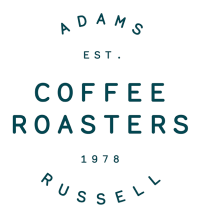

In this guide I’m going to give you in depth comparisons of all the essentials you need for brewing coffee when camping, such as:
1. Coffee
· Fresh vs Instant
· Ground vs Beans
· Hot vs Cold Brew
2. Brewing method
· Aeropress vs Stovetop
3. Water
· Filtered vs Tap
4. Drinking
· Mug vs Flask
In each comparison I will answer 3 questions:
- What is the difference?
- Which has a better taste?
- Which is easier?
- Which should I choose?
First, lets start with what kind of coffee you want to make on your camping trip…
What coffee should I take camping?
Fresh vs Instant
What’s the difference?
The main difference between fresh coffee and instant is the processing. Of course, this affects other factors such as:
- Taste – Fresh is generally considered better.
- Brewing – Instant is favoured for its fast brewing.
- Price – Instant is cheaper.
- Appearance – Instant either comes in granules or a very fine powder, fresh comes as beans or a grounded powder.
- Smell – Fresh is favoured for its more prominent and appealing aroma.
At the very beginning of the processing, both start out as the seeds in a coffee cherry. Both are harvested, processed and roasted to resemble the brown iconic bean that we all recognise. But, what happens after that is where the differences occur.
For fresh, the process can stop there as they may be sold as fresh beans. Or they may be ground up to be sold as fresh ground coffee.
Instant is a brewed concentration of coffee that requires water to be brewed again. To produce it, one of two methods are used; spray drying or freeze drying. Here’s a video of freeze drying to give you a better understanding of the process:
You are currently viewing a placeholder content from Default. To access the actual content, click the button below. Please note that doing so will share data with third-party providers.
Which has a better taste?
Fresh coffee is generally favoured for its higher quality taste for a few reasons:
- Low quality robusta beans are usually used for instant whereas fresh usually consists of higher quality arabica
- Most instant is dark roasted to get an even flavour and cover up defects
- The freeze or spray drying process can destroy the aroma of instant coffee and remove a lot of the flavour
You may be thinking… ‘So, why would anyone use instant?’
Keep reading to find out…
Which is easier?
Technically speaking, instant coffee is easier to brew than fresh. Simply add a spoonful to your mug and pour in hot water.
However, that doesn’t mean fresh coffee isn’t easy to make. Methods such as an Aeropress or French Press are incredibly easy to use. They are also as simple as adding in the coffee and water, but it just takes a little more waiting time for brewing and plunging.
You are currently viewing a placeholder content from Default. To access the actual content, click the button below. Please note that doing so will share data with third-party providers.
Which should I choose?
It comes down to low price and more convenience vs high quality and better flavour. Fresh coffee can still be inexpensive and convenient for a camping trip, so we would always recommend investing in the irresistible aroma and rich flavours of fresh.
Beans vs Grounds
What is the difference?
The biggest differences are freshness, flavour and processing. Beans are sent to the customer as soon as they have cooled down from roasting, however ground requires the extra grinding step.
As the beans are not grounded by the roaster, this must be done by the customer, so you will need either an electric or manual grinder.
Which has a better taste?
Beans are favoured for their fresher flavour. Once the beans are ground, there is a larger surface area that is exposed to the air. Once the coffee starts to oxidise (react with the oxygen), it starts to lose flavour.
Grinding your own beans is a sure way to make sure you’re getting the freshest coffee possible, as some shops may have stored grounds on their shelves for weeks.
At Adams + Russell we use specially designed packaging that allows the grounds to release their natural gases to obtain the freshest flavour possible and deliver straight to your door.
Which is easier?
As ground coffee involves less steps, it is easier to brew than beans. A manual or electric grinder is required for beans, and this takes longer, involves extra work and extra cleaning.
However, there are many grinders on the market that are extremely easy to use and can grind your perfect setting with just the touch of a button.
Which should I choose?
It depends whether you are more invested in a fantastic fresh flavour or convenience and ease of use. If you’re looking for both, try beans and a simple hand grinder. Hand grinders are generally smaller, lighter and easier to keep clean.

The perfect mini hand grinder for your outdoor adventures
The Hario mini slim hand grinder is your perfect companion for any outdoor adventures. It is designed for storage in a compact space and features adjustable grind settings with a 24g capacity. It uses ultra precise ceramic burrs for high quality grinding and is easy to take apart and clean.
![]()
Hot vs Cold Brew
What is the difference?
Although we probably don’t need to state the obvious, one is hot, and the other is cold. This is because they are brewed through different processes.
You are probably familiar with brewing hot coffee, and you may have used devices such as a French Press, stove top espresso maker, Aeropress, filter machine or pour over, just to name a few. Hot water is used to quickly penetrate the grounds and extract the flavour to produce a beautiful cup of hot Joe.
Cold brew generally uses cold water and a French Press. This brewing device is ideal as the grounds need to be immersed in the water for a lot longer (at least 12 hours) to get the full flavour.
Which has a better taste?
There is no ‘better’ taste between hot and cold brew, but there are some notable differences. Cold brew uses cold water, which creates a smoother drink as it extracts less acidity and bitterness. Many enjoy cold brew for this reason and find it easier to drink.
Although, many people prefer a hot cup of coffee for the same reason. A lot of coffee lovers look for that acidity, sharpness and bite in their cup. These are generally favourable qualities for coffee connoisseurs.
Which is easier?
Both can use similar brewing methods, such as the French Press or cafetière, but the brewing time is what defines the easier task.
As cold brew takes at least 12 hours to brew and hot coffee can take as little as 2 minutes, a hot brew could be considered the easiest method.
Although, cold brew simply requires adding in the grounds and cold water to be stored in the fridge overnight, so they could be considered as equally simple tasks.
Which should I choose?
Here are a few things to consider when deciding between these two methods:
- What time of year are you camping? A hot cup of coffee is perfect for Autumn and Winter whereas a refreshing cold brew might be just the ticket for Spring and Summer.
- Are you able to keep cold brew cold? If you aren’t taking a cooler or don’t have room for a French Press in there, a luke warm brew may not be the refreshing drink you had in mind.
- When do you enjoy coffee? If you’re the kind of person that only has a coffee when they feel like it, in other words unplanned, waiting 12 hours for a cold brew probably isn’t best suited to you. But, if you enjoy a cup at the same time every morning, planning for a cold brew could work well in your routine.
Now you’ve got an idea of the coffee to pack on your outdoor adventure, lets compare the different brewing methods you should consider…
Brewing method – How do I make coffee when camping?
Aeropress vs Stovetop
What is the difference?
There are a few big differences between these two brewing methods:
- A stovetop espresso maker requires a continuous source of heat
- A stovetop espresso maker requires more attentiveness
- An aeropress is quicker to brew
- An aeropress is made from plastic whereas a stovetop espresso maker is generally made from aluminium
- An aeropress requires paper filters
Which has a better taste?
It has hard to label one with a ‘better’ taste as it depends on your preferences. Many favour an Aeropress for a cleaner tasting cup, but this is also a reason that some would prefer a stovetop.
If your favourite drink is filter coffee, the Aeropress is probably the best method for you. This is because it uses paper filters similar to a filter coffee machine, which re-creates the smooth, clean and balanced cup that you’re used to.
If you prefer a cup that packs more of a punch, a stovetop is your best bet. The paper filter in an Aeropress can prevent the oils from getting to the cup, but the stovetop doesn’t have this issue. This creates a strong, rich and bold cup.
Which is easier?
Neither requires more difficulty and it really depends on what you’re used to. If you’ve grown up using a stove top for coffee making, an Aeropress may seem complicated to you, and vice versa.
A stovetop requires more attentiveness as you need to keep an eye on it to make sure its not boiling over, but this becomes easier over time.
Both are pretty simple methods of brewing once you have had enough practice.
You are currently viewing a placeholder content from Default. To access the actual content, click the button below. Please note that doing so will share data with third-party providers.
Which should I choose?
So, which is best for a camping trip?
We’d recommend the trusty Aeropress for your outdoor adventures and here’s why:
- It is plastic which can be safer for travelling and children
- It only requires hot water and not a continuous heat source
- It produces a delicious clean tasting cup that is full of flavour
- It is incredibly lightweight and portable
- It is very quick and easy to clean
View this post on InstagramA post shared by Adams & Russell Coffee Roaster (@adamsandrussell) on
Now you’re armed with coffee and a brewing device, let’s compare the water options…
What camping water should I bring?
Filtered vs Tap
What is the difference?
The main difference between filtered and tap water is the process it goes through. The vast majority of tap water comes from reservoirs, lakes and rivers. Water companies go through many stages of filtering and treatment to make sure it is clean and drinkable when it gets to our taps.
Filtered water goes through an extra step of filtration and is usually sold in plastic bottles. This extra step involves ozonisation and removing the chlorine.
Which has a better taste?
There is a continuous debate over whether tap or filtered water has the better taste. Some have a strong favourite, some a mild preference and some can’t tell the difference.
It is of course down to personal preference, so there is no option that tastes ‘better’.
Filtered water is favoured for a cleaner and purer taste as it removes more of the sand, silt, sediment and chemical.
However, this study showed that participants preferred local tap water after going through a blind taste test.
Which is easier?
If you’re at a campsite that has tap water facilities, this is probably the easiest option as you don’t have to take your own bottled water.
If you don’t have access to camp site facilities, then you will have to take your own bottled water.
Which should I choose?
Taking your own bottled water doesn’t mean packing lots of little bottles. For the best flavour in your cup we’d recommend taking a large bottle of filtered water (e.g 5 or 10 litres depending on how long you are camping for).
We’re almost there. Finally, how are you going to drink your coffee? Here are the best devices for the great outdoors…
How do I drink coffee on a camping trip?
Mug vs flask
What is the difference?
There are many different mugs and flasks on the market which are perfect for camping. The lines between mugs and flasks are becoming more blurred as the designs become more interchangeable.
Mugs designed to look like flasks, flasks designed to look like mugs and everything in between. They have similar primary purposes (to hold hot drinks), but they are still slightly different.
A flask is designed to maintain the temperature of a hot or cold drink for a certain amount of hours.
A mug is designed to provide convenient drinking (usually at home) but won’t keep the drink hot for a prolonged amount of time.
Which has a better taste?
It’s important not to focus on the type of cup you’re using, but rather on the material of the cup. For example, poor quality plastic cups can alter the taste of your cup as it absorbs the flavours from past drinks.
Porcelain or stainless steel are great options for coffee as they provide insulating properties and don’t affect the taste of your drink.
Which is easier?
For camping, a flask is the most convenient option for enjoying your hot cup of coffee. Opt for a leak proof vacuum seal to avoid spills and keep your delicious drink intact.
A thermal flask will make it easier to maintain the temperature of your drink so there’s no need for inconvenient reheating. Flasks also make it easy to make a big batch of coffee in the morning and enjoy throughout the day, as some can keep coffee hot for up to 8 hours.

Pioneer Travel Flask with an unbreakable inner & body…
The Pioneer travel flask by Grunwerg is an essential for coffee lovers on a camping trip. It maintains the temperature of hot or cold drinks for up to 8 hours and features a stylish unbreakable inner and body. This product also benefits from a leak proof vacuum seal.
![]()
Which should I choose?
We recommend a stainless steel thermal flask for your camping trip, here are the top reasons why:
- Stainless steel won’t alter the taste of your coffee
- They can maintain the temperature of hot and cold drinks for up to 6 hours
- They are much safer if they have a leak proof seal
- They are easy to clean
- They are lightweight, sturdy and perfect for travel
Enjoy your outdoor adventure with freshly roasted Adams + Russell coffee
Many of our customers enjoy Adams + Russell coffee on their camping adventures, so make sure it is on your list of essentials for your next trip.
We only hand roast in small batches to ensure the highest quality possible. This process allows us to closely monitor the coffee beans and make sure we are getting the perfect even roast.
Once the beans have been cooled and ground, we ship them straight to your door in specially designed packaging that maintains the freshness.
There’s nothing like waking up in your tent on a crisp morning and enjoying a delicious hot cup of freshly roasted coffee.
Don’t forget to tag us @adamsandrussell on Instagram and Facebook so we can see your exciting camping adventures!

